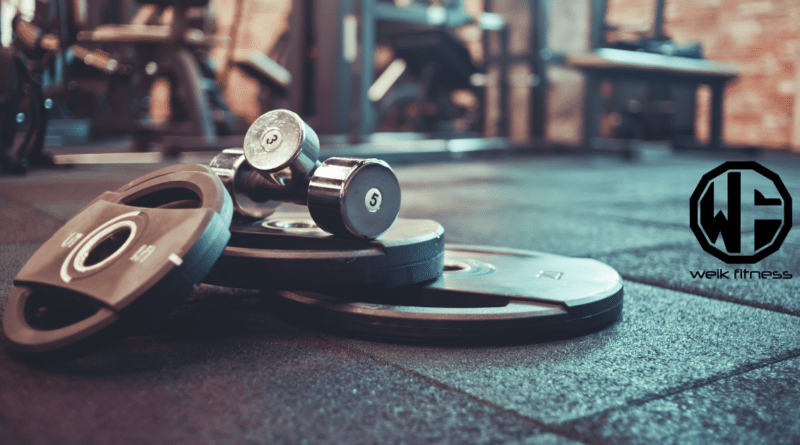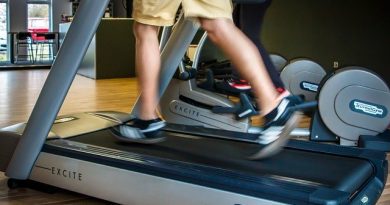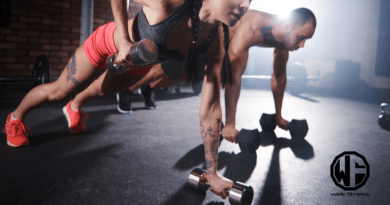What Garage Gym or Home Gym Flooring Options Do You Have?
Home gym flooring isn’t exactly a “must-have,” but it is an excellent idea if you want to protect your floors from damage if you turn part of your home into a gym.
Personally, I may have gone a little overboard with my home gym flooring, but then again, I’ve also dropped over $50k building out my home gym to ensure I never need to step foot in another commercial gym for as long as I live.
It’s not that I don’t like commercial gyms, it’s just I don’t necessarily like that gyms these days are full of influencers caring more about their videos than actually lifting.
Selecting the ideal home gym flooring for your home gym or garage gym can seem challenging. We all wish to have an area where we can exercise in comfort and safety without fretting over damaging the floor beneath us or our prized equipment.
Through my own journey of trial and error, I stumbled upon an enlightening fact: not every home gym floor is built to endure the hard use and pounding associated with workouts and heavy weights.
Related Article: Build This Affordable DIY Squat Rack for Your Dream Home Gym
Imagine my surprise when I discovered rubber mats topping the charts for both coziness and resilience! Armed with this insight from personal experience, this article will provide you with all you need to know to make an informed decision for your workout sanctuary and what home gym flooring you should go with to suit your wants and needs.
From rubber tiles that shield against heavy impacts to foam mats offering gentle support during your fitness regimen, prepare to elevate your training ground.
Disclaimer: This article is for informational purposes only and is not meant to treat or diagnose any condition. It is recommended that you speak with your doctor before starting any exercise program, changing your daily nutrition, or adding any supplements to your regimen.
Table of contents
Key Takeaways
- Rubber mats are great for heavy workouts, protecting floors and equipment from damage. They’re tough, resist tears, and last long.
- Water-resistant flooring like rubber keeps your gym mold-free, easy to clean, and safe from water damage.
- Foam tiles offer good shock absorption and are gentle on joints during high impact exercises. They’re also affordable and easy to install.
- Interlocking tiles can easily fit any space without needing special tools for installation. They make cleaning simple with just soap and water.
- Regular maintenance of gym flooring ensures it stays in top shape. Using mild detergent for mopping rubber floors will keep them looking new.
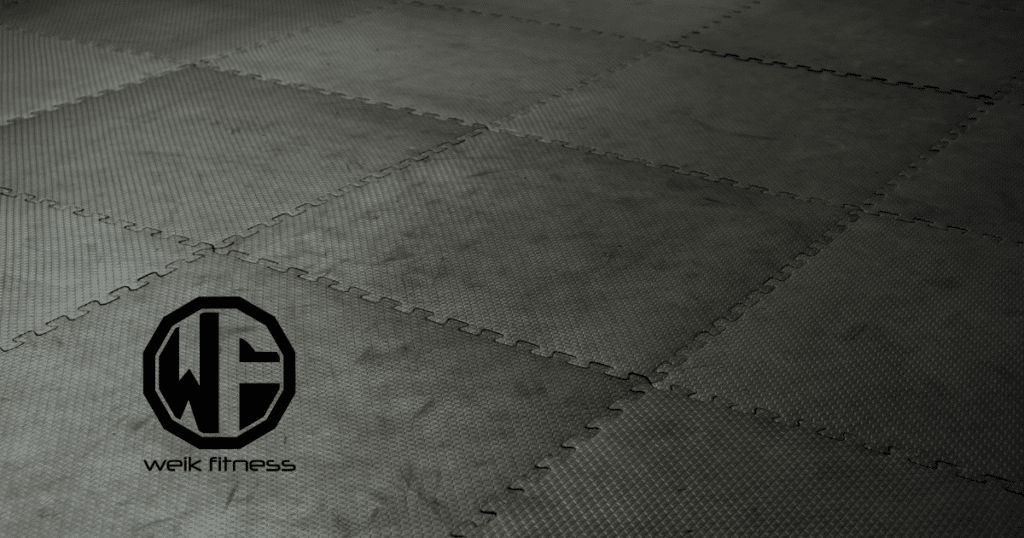
Factors to Consider When Choosing Home Gym Flooring
When choosing home gym flooring, factors like durability, water resistance, comfort and shock absorption, and maintenance requirements need consideration.
Ensure the type of flooring can withstand heavy equipment, is easy to clean, offers cushioning for workouts, and fits your maintenance routine.
Below are some factors to consider:
1. Durability
I always check for tough materials in home gym flooring because it must withstand heavy use. Rubber flooring is my go-to choice. It’s strong enough to support big exercise machines and weights in my home gym.
This type of floor saves me from worrying about damage to the house’s foundation or costly exercise gear. I’ve seen rubber floors last for years in commercial gyms, so I trust them in my home gym setup, too.
Related Article: Home Gym Free Weights — Dumbbell and Barbell Weight Set Guide
Choosing a durable floor also means less hassle for me over time. Rubber doesn’t just handle the weight of equipment; it resists tears, scratches, and dents. When I drop weights during a workout, my rubber gym floor bounces back without showing signs of wear and tear.
This resilience makes rubber an investment that keeps my home gym looking as good as new, no matter how intense my workouts get.
2. Water Resistance
Water resistance matters a lot in home gym flooring. I learned this the hard way after setting up my first home gym (I was poor and used old carpet as my flooring — bad idea). My initial choice wasn’t water-resistant. Soon, mold and mildew became unwelcome guests, thriving beneath the surface of my carpet.
While it protected the gym equipment from the foundation floor, it wasn’t that durable, and water became a major issue (especially when we got water in the basement from a heavy storm that pounded an old home I owned).
This experience taught me to prioritize materials like rubber for their ability to block moisture effectively.

Choosing waterproof or water-resistant options ensures that cleaning is a breeze — just some mild soap and water will do. Plus, dampness from sweat or spills won’t seep through, keeping the base floor safe and dry.
Rubber tiles or rolls are perfect as they stand tough against water while supporting heavy weights and equipment like treadmills or barbells easily. Trust me, going with flooring that laughs in the face of spills has saved my home gym — and possibly my health from potential disaster.
3. Comfort and Shock Absorption
I always make sure my home gym flooring is gentle on my joints. High-impact workouts demand surfaces that absorb shock well. This keeps me safe from injury and protects my floors at the same time.
Rubber gym flooring stands out for this reason. It cushions every squat, jump, and deadlift I do.
Choosing rubber tiles or rolls for my home gym was a great investment (even though extremely costly). These materials offer fantastic support and are tough enough to handle free weights without a dent. Plus, they’re easy to install over concrete floors or hardwood floors, turning any space into a comfortable workout area.
4. Maintenance Requirements
Rubber flooring requires regular sweeping and occasional mopping with a mild detergent. It’s essential to avoid harsh chemicals that could damage the material. Foam tiles can be easily cleaned with a vacuum or damp cloth, making them low maintenance.
Additionally, interlocking tiles might need periodic cleaning to remove accumulated dust and dirt in the grooves by using a vacuum or mop.
Ensure you’re fully aware of your chosen home gym flooring material’s specific maintenance needs to keep it in top condition.
Home Gym Flooring Rubber Tiles and Mats
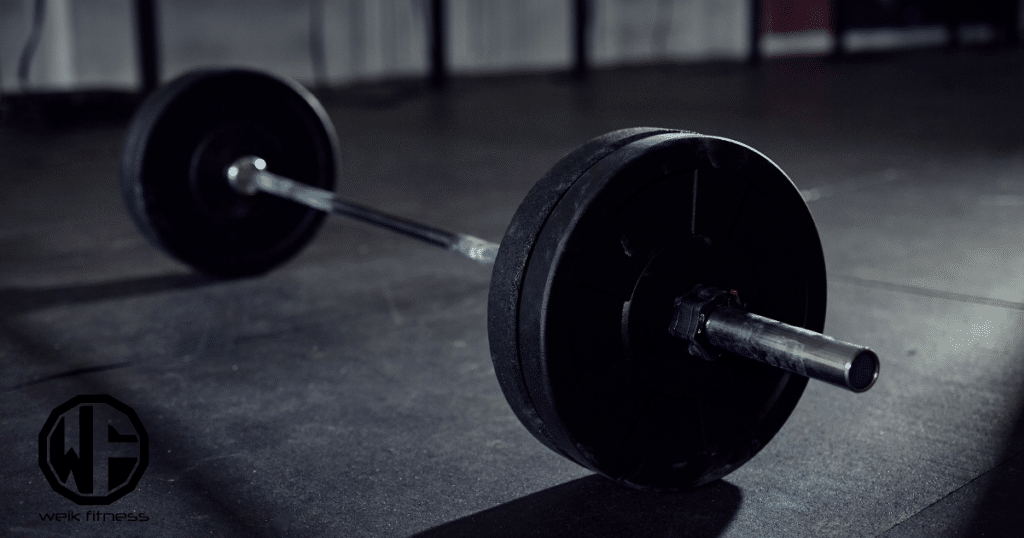
Rubber flooring provides excellent shock absorption during workouts, which makes it one of the best flooring options out there. This is my preferred option for heavy-duty flooring, but also more costly. I will say this, though, my rubber mats have zero show of wear and tear (even with a commercial treadmill or elliptical sitting on top), and I’ve had them for nearly 15 years.
Benefits of Rubber Gym Flooring
Rubber flooring offers durability and easy maintenance, making it ideal for home gyms. Its slip-resistant nature ensures safety during workouts, while the shock absorption properties protect exercise equipment and your joints.
Related Article: 10 Reasons Why Everyone Needs to Build a Home Gym
Going with rubber gym flooring is not just a practical choice but also an eco-friendly one, as many products are crafted from recycled materials. The visual appeal of high-quality rubber gym flooring makes it a top choice for fitness enthusiasts seeking a sustainable and resilient option to enhance their home workout space.
Recommended Rubber Mats Brands and Products
When looking for home gym flooring rolls for your home or garage, consider the following recommended brands and products:
1. ProsourceFit Puzzle Exercise Mat: These foam tiles provide cushioning and support for a variety of exercises, making them ideal for home gyms.
2. Xspec Thick Equipment Mat: This heavy-duty rubber mat offers protection for your floors during weightlifting and other high-impact workouts.
3. American Floor Mats: These interlocking rubber tiles boast durability and shock absorption, perfect for creating a versatile workout space in your home gym.
4. Rubber-Cal Elephant Bark Floor Mat: Constructed from recycled rubber, this flooring option is both eco-friendly and resilient, providing excellent traction and comfort.
5. BalanceFrom GoGym Puzzle Exercise Mat: With high-density EVA foam material, these interlocking tiles are designed to withstand heavy use while offering stability and noise reduction.
6. ProsourceFit Extra Thick Puzzle Exercise Mat: Offering various color options and easy assembly, these non-toxic foam tiles are suitable for any home gym environment.
7. We Sell Mats Foam Interlocking Floor Tiles: These water-resistant, easy-to-clean foam tiles are versatile and durable, making them an excellent choice for fitness enthusiasts with home gyms.
Home Gym Flooring Foam Mats and Tiles
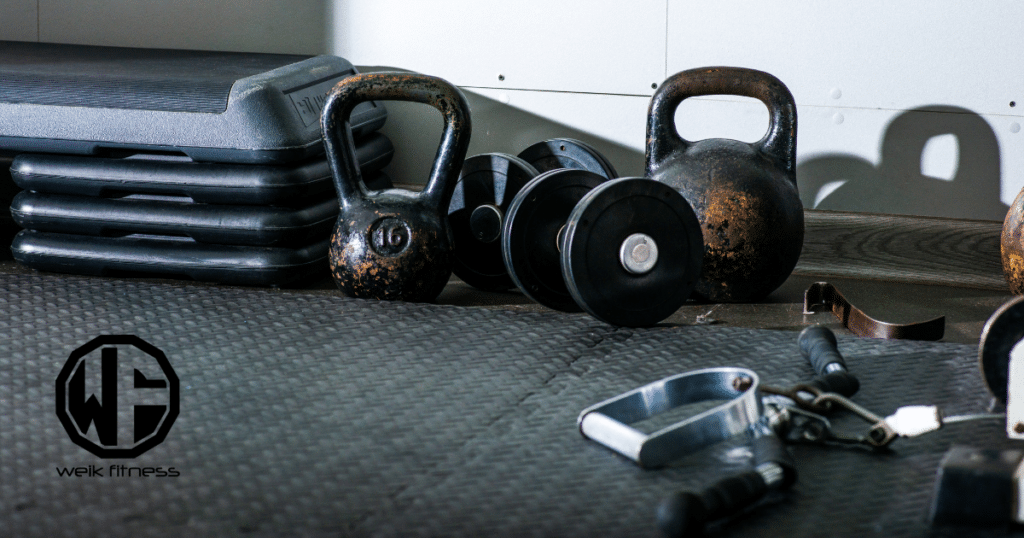
Foam tiles provide excellent shock absorption for home gym flooring. They’re easy to install and come in a variety of colors — perfect for creating a custom workout space. Learn more about the benefits of foam tiles and how they can enhance your home gym experience.
Advantages of Foam Tiles
Foam tiles offer great advantages for home gyms. They are flexible and shock absorbent, providing protection for joints during workouts. The soft and comfortable underfoot texture enhances the overall gym experience.
Additionally, foam tiles are affordable, easy to install, and versatile for creative use beyond just home gym flooring. With their forgiving cushioning properties, they’re not only suitable for fitness enthusiasts but also provide a safe play area for kids.
Top Picks for Foam Tiles
Foam gym tiles are versatile and affordable, providing excellent cushioning for home gyms. Here are the top picks for foam tiles:
1. ProSource Puzzle Exercise Mat: These lightweight and durable foam tiles offer great impact absorption and are easy to assemble.
2. BalanceFrom Kid’s Puzzle Exercise Play Mat: These non-toxic, waterproof foam tiles come in various colors and provide a safe, cushioned surface for workouts.
3. ProsourceFit Extra Thick Puzzle Exercise Mat: With their interlocking design, these thick foam tiles are perfect for high-impact exercises and are easy to clean.
4. We Sell Mats Foam Interlocking Floor Tiles: These dense foam tiles create a comfortable workout space and come in various thickness options for customized support.
5. Forest Floor Wood Printed Foam Mats: Featuring a realistic wood grain pattern, these foam mats offer both comfort and aesthetic appeal for any home gym setup.
Home Gym Flooring Interlocking Tiles

Interlocking tiles offer a versatile and easy-to-install option for home gym flooring, providing excellent durability and shock absorption. Check out our recommended products to find the perfect fit for your fitness space.
Pros of Using Interlocking Tiles
Interlocking tiles offer hassle-free installation and disassembly for versatile usage. With no need for nails, adhesive, or screws during setup, it’s a user-friendly option. They are easily cleaned with mild soap and water — ideal for those who want convenient maintenance.
Their customizable size makes them suitable for various gym spaces.
This flooring solution provides durability without sacrificing cost-effectiveness — a great fit for home gyms seeking a versatile and reliable foundation.
Suggested Products (Rubber Floor Tiles, Rubber Rolls, Gym Mats, Gym Tiles)
When seeking the best gym flooring products for your home workout space, consider these top-quality options:
1. Rubber Flooring Rolls: Look for durable rubber rolls that provide excellent shock absorption and noise reduction during workouts. Look for brands like XMark Fitness or Pogamat for heavy-duty rubber flooring that can withstand intense exercise routines.
2. Interlocking Tiles: Select high-quality interlocking tiles from reputable brands such as ProsourceFit or IncStores. These tiles offer a simple installation process and exceptional durability, making them an ideal choice for home gyms.
3. Foam Floor Mats: Explore premium foam floor mats like those offered by BalanceFrom, or We Sell Mats to create a comfortable and supportive exercise surface. These mats are easy to clean and provide cushioning for various workout activities.
4. Gym Floor Tiles: Invest in gym floor tiles from reliable brands like Rubber-Cal or Greatmats that offer superior traction, shock absorption, and long-lasting performance for your home fitness area.
Enhance your home gym experience with these recommended home gym flooring options tailored to meet your fitness needs and preferences.
Installation Tips for Home Gym Flooring and Garage Gym Flooring
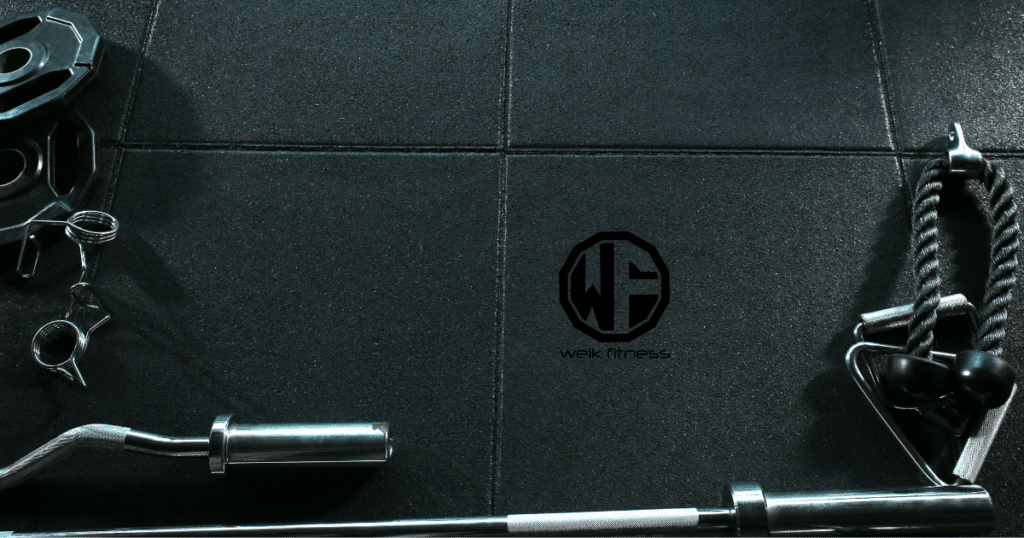
When installing home gym flooring, consider the following tips:
- Choose the most suitable flooring material based on your workout style and equipment, such as rubber tiles for heavy weights or foam tiles for aerobic exercises.
- Ensure proper sub-floor preparation by cleaning thoroughly and addressing any existing issues to create a flat and stable surface.
- When installing interlocking tiles, start from one corner and work across the room, ensuring a snug fit between each tile.
- Use appropriate adhesives or tapes if opting for permanent installation of rubber or foam flooring to prevent movement during workouts.
- Consider adding shock-absorbing under-layment beneath the home gym flooring to enhance comfort and minimize impact on joints.
- Perform regular maintenance by cleaning the flooring with recommended products to prolong its lifespan and maintain a hygienic workout environment.
What’s the Best Home Gym Flooring for Home or Garage Floors?
When setting up a garage or home gym, consider the variety of home gym flooring options. Each choice has its benefits and factors to weigh, such as durability and ease of maintenance. Rubber and foam seem to be the most commonly used room flooring for an exercise room.
Rubber mats and interlocking tiles are top picks for protecting your workout space. As you navigate through the decision-making process, keep in mind that selecting suitable flooring contributes to creating a safe and effective exercise environment in your own home.
Related Article: Build a Home Gym with Grind Fitness Equipment
Personally, I use large rubber mats (think along the lines of horse stall mats) that are super thick for the areas of my home gym that have free weights, and then I have the interlocking foam tiles on all the other areas, such as my cardio room and abs/core/stretching area.
Figure out what your needs are for your home gym flooring, and see if anything mentioned in this article is what you’re in need of.
Latest Articles:
- Sirtuins: Key Regulators in Health and Disease Dynamics
- NAD3: Natural NAD Supplement for Cellular Longevity & Energy
- What Makes the Best Electrolyte Supplement for Athletes?


*Disclosure: This article may contain affiliate links or ads, which means we earn a small commission at no extra cost to you if you make a purchase through these links. These commissions help support the operation and maintenance of our website, allowing us to continue producing free valuable content. Your support is genuinely appreciated, whether you choose to use our links or not. Thank you for being a part of our community and enjoying our content.
PLEASE CONSIDER SHARING THIS ON YOUR SOCIAL MEDIA TO HELP OTHERS LEARN MORE ABOUT THIS TOPIC.


